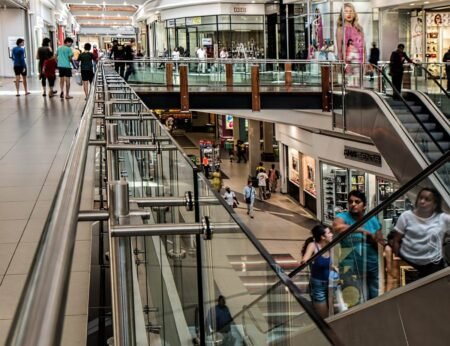The European Commission published new figures on 25 April showing that, in 2015, more than 2,000 dangerous products triggered EU-wide alerts. A key challenge is the increasing share of products bought online from outside the EU.
Advertisement
What is the Rapid Alert System for non-food dangerous products?
1. What is the Rapid Alert System for non-food dangerous products?
The European Rapid Alert system for non-food dangerous products ensures that information about dangerous products withdrawn from the market and/or recalled from consumers anywhere in Europe is quickly circulated between Member States and the European Commission, so that appropriate action can be taken everywhere in the EU. Thirty-one countries (EU together with Iceland, Liechtenstein and Norway) currently participate in the system.
The system was established by the General Product Safety Directive 2001/95/EC and became fully operational in 2004.
What type of measures can be taken?
The most common measures are: ban/stop on sales; withdrawal of a dangerous product from the market or recall from consumers; and import rejection by the customs authorities.
What is covered by this alert system?
The system covers dangerous non-food products intended for consumers (e.g. a toy, a cosmetic product, clothing, childcare products) and for professionals (e.g. machinery, construction products), which pose a serious risk to the health and safety of consumers (risks of injuries, chemical risks, products harmful to the environment etc.). It also covers exposure to other hazards of relevance to public interests, such as the presence of heavy metals in consumer products, which can contaminate soil and water.
The system covers the majority of non-food products. Other categories of non-food products, such as pharmaceuticals and medical devices, are excluded from its scope as they are covered by other specific alert systems.
What are the obligations of national authorities?
The role of national authorities is to ensure that businesses respect their obligation to place only safe products on the market. For that purpose, they carry out market surveillance and intervene when non-compliant products are offered for sale or detected on the market. In such cases, they act to ensure these products are removed or banned. To ensure that these measures are also known by the other European countries and are swiftly followed Europe-wide, this information is circulated via the Rapid Alert System. This is done via the designated national Contact Points that coordinate the information exchange at national level. Notifications submitted are validated by the Commission and rapidly circulated to the participating countries for appropriate action. The results of these follow-up activities are reported back through the system. The Contact Points also confirm the text to be published on the Commission’s public website and any changes that are made to it.
What is expected from businesses?
Once aware that a product is dangerous, producers, importers or distributors must immediately take necessary action and cooperate with national market surveillance authorities.
The Commission is also working with businesses engaged in online sales, including the intermediaries, on how to keep consumers safe from dangerous products through this fast-developing, new supply channel.
2. Analysis of the activities related to the Rapid Alert System
What were the most significant developments in 2015?
The Rapid Alert System for non-food, dangerous products has been recording a fairly stable number of alerts over the last few years. The number of notifications shows a slight drop to 2,072 but the reporting activity of follow-up measures on notifications remains high at 2,745 (see below for trend analysis).
For the first time, over 50% of the notifications triggered follow-up actions in the system, meaning that consumer authorities in different countries have also acted on the same issue flagged through the system .
Some updates have been made to the website: weekly reports now include the possibility to preselect notifications by product sector, country of origin, reference number and type of risks. Further initiatives to actively engage with stakeholders, further increasing the speed of the information exchange and on optimising the use of the information provided by the system by interested parties, are on their way.
To date, more than 22,000 entries have been recorded on measures taken by Member States against dangerous products found on our markets.
What were the main findings in 2015?
In 2015, a total of 2,072 notifications, reporting measures to stop products which posed a risk to consumer health and safety, were circulated through the Rapid Alert System. 1,703 notifications concerned products which posed a serious risk to consumers. The remaining notifications refer to lower risk levels or were transmitted for information only.
Traditionally, “Injuries” has been the most often notified risk. In 2015, it has moved to second place, with “Chemical” risk becoming the number one risk category. Market surveillance authorities have put emphasis on controlling the presence of unauthorised and dangerous chemicals in fashion jewellery, toys and clothing, also thanks to Joint Market Surveillance Activities co-funded by the European Union.
Why did the number of notifications for dangerous products decrease in 2015?
The number of notifications has had a steady upward trend since its creation in 2003 with the exception of 2011 and this slight dip in 2015. In the last four years, the number of notifications has consistently been well above 2,000. These figures show the importance Member State authorities and the Commission continue to give to the protection of consumer safety.
A number of factors determine the number of notifications, such as the economic activity, how rules are respected by the producers, activity of the market surveillance authorities, it is therefore difficult to single out a reason that would explain this year’s slight drop.
The number of notifications has grown steadily in the past and is now stable. More focus has been placed on the quality of the information in the notifications. This contributes to a higher and wider distribution of follow-up actions by other countries in the network, and subsequently it leads to a safer market.
Which EU countries notified most cases?
In 2015, the amount of notifications per country was similar to that registered the previous year. All participating countries notified dangerous products.
The following five Member States accounted for nearly half of all notifications of dangerous products in 2015:
- Spain 12 % (239 notifications)
- Hungary 11 % (238 notifications)
- Germany 10 % (208 notifications)
- United Kingdom 8 % (162 notifications)
- Bulgaria 7 % (151 notifications)
What does it show when a country makes a lot of notifications is it that there are more dangerous products on that particular market?
The number of notifications made by a particular Member State cannot be directly linked to the level of safety of the products on its market. There may be many reasons why some Member States have more notifications than others: large market, large import volumes, experienced inspectors, etc. In general, it follows that the European countries which have the biggest markets and the greatest number of imported goods, and which also have the highest number of inspectors, find more dangerous goods and thus notify through the Rapid Alert System more often than smaller countries.
What were the main products and risks detected through the Rapid Alert System?
The product categories most often notified, which accounted for 70% of all notifications were:
1. Toys 37% (555 notifications)
2. Clothing, textiles and fashion items 17% (346 notifications)
3. Motor vehicles 10% (214 notifications)
4. Electrical appliances and equipment 9% (199 notifications)
5. (Fashion) Jewellery 6% (117 notifications)
This distribution also shows a relatively stable pattern of product categories for which notifications have been made. Toys and clothing account for over 50% of the cases.
The explanation for a similar constant pattern is found mostly in the high volume of consumption/supply in the above five categories (e.g. electrical appliances include mobile phones, laptops, extension leads, battery chargers), which increases the chances of finding dangerous products.
In 2015, the most notified risk was “Chemical” risk and it concerned products from the product categories “Toys” (37%) and “(Fashion) Jewellery” (20%). Injury risks, which over the years consistently has been the most highly notified risk, has moved to second place. This move has led to a more balanced distribution of different risks notified in the system.
The five most frequently notified risk categories were:
- Chemical 25 % (572 notifications)
- Injuries 22 % (524 notifications)
- Choking 17 % (395 notifications)
- Electric shock 12 % (281 notifications)
- Fire 8 % (177 notifications)
Where did the largest amount of dangerous products come from in 2015?
The majority of dangerous products notified in the system came from outside the EU. China (including Hong Kong) was indicated as a country of origin for 62% (1,262) of notified products.
Dangerous products of European origin accounted for 313 notifications (15%), including 73 products of German origin, 46 products from the UK, 35 from Italian origin and 34 products from Poland.
3. Cooperation with China
The European Commission and the Member States have established a regular cooperation with the Chinese authorities on product safety issues. It includes, since 2006, exchanges of information about specific dangerous products of Chinese origin. In 2016, the discussion will extend to possible further cooperation to avoid safety risks through online sales of consumer products.
Is there an increase in the number of notifications of products of Chinese origin?
The share of consumer products of Chinese origin notified via the alert system remains stable : 62% this year and 64% in 2014. China also represents the largest source of imports for Europe.
The Commission informs the competent Chinese authorities (AQSIQ) of all notifications in the Rapid Alert System of products that are of Chinese origin. Cooperation is well-established and the Chinese authorities submit quarterly reports to the Commission with the conclusions of their follow-up actions undertaken. So far, more than 30 quarterly reports have been provided to the Commission.
From 2006 to 2014, AQSIQ has ensured follow-up action on more than 3,000 notifications. On average, AQSIQ investigates about one hundred cases per month. On average, 57% of the investigations resulted in preventive or restrictive measures being adopted either by AQSIQ or voluntarily by the Chinese manufacturer/exporter (e.g. export stop or strengthened supervision). This figure remains stable in time. For cases where no measures were taken, the main reason indicated was that insufficient information was available to trace the Chinese company responsible for manufacturing and/or exporting the products to the EU.
Further information:






